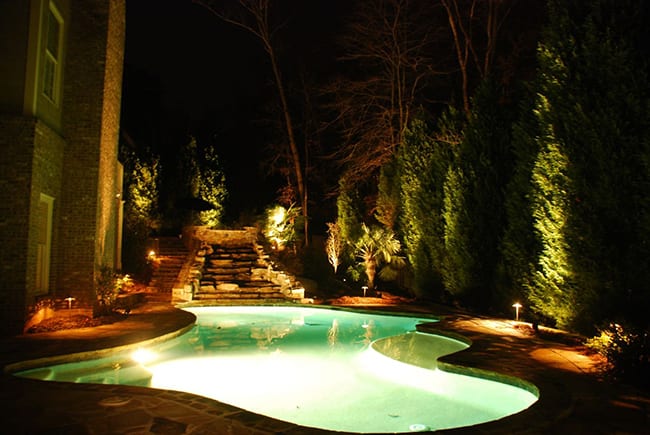In the past, we’ve discussed the importance of planning exterior lighting even though you might not be ready to have it installed. When building a new home or organizing a major renovation, discussing your options with a landscape lighting expert in Atlanta in advance helps you avoid higher costs later. It also allows for more design options too.
To expand on this topic, the professionals at NightVision Outdoor Lighting want to share three key elements you’ll want to pre-plan when considering outdoor lighting for new construction homes or major home remodels.
Transformer Location
A transformer is the heart of the landscape lighting system as it provides power to the lights. Knowing where the power supply will be during the design phase helps save on electrical costs. An average LED lighting system uses fewer wires and transformers with a centrally located power source. It’s easier to operate lights for the whole property too.
How To Control Your Outdoor Lighting System?
Three main options for controlling your lighting system are a photocell and timer combination, an astronomic timer, and a tie into the control system of your house.
A photocell/timer combination is similar to an astronomic timer with a notable difference. A photocell/timer combination needs to be adjusted twice a year to accommodate for the changing seasons. Whereas, an astronomic timer adjusts itself and has more features.
The last option works with smart home systems. It allows homeowners to turn on or off their lights using a phone or tablet.
Besides the ease of use, you and your lighting designer can designate different zones. You can set your backyard as an entertainment zone that’s used as needed and then set the rest of your house as a security zone that stays on throughout the night.
This option is also convenient for service because you can turn on your lights for a technician while you’re gone. But, most of the time, a service technician can manually turn on your system if you’re not home.
Sleeving:
You might have heard us mention sleeving in previous posts. It’s a process we use to run wires underneath hardscapes (driveways, sidewalks, patios, etc).
Whenever possible, we prefer to complete the sleeving before the hardscape gets installed. It creates a cleaner finished look and allows for more lighting design options.
For the project pictured above, we worked with the homeowners during the landscape lighting design phase and then other contractors to plan the sleeving. Otherwise, it would have been difficult (or in some instances not possible) to light all the areas on their patio.
If you have any questions or would like to discuss your outdoor lighting needs, please feel free to contact us or set up your free consultation online.



